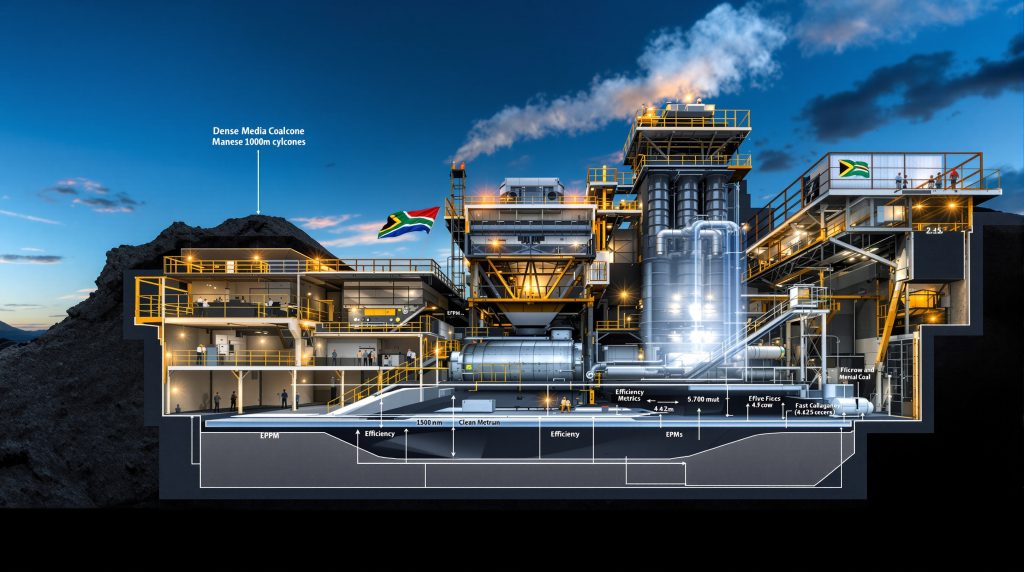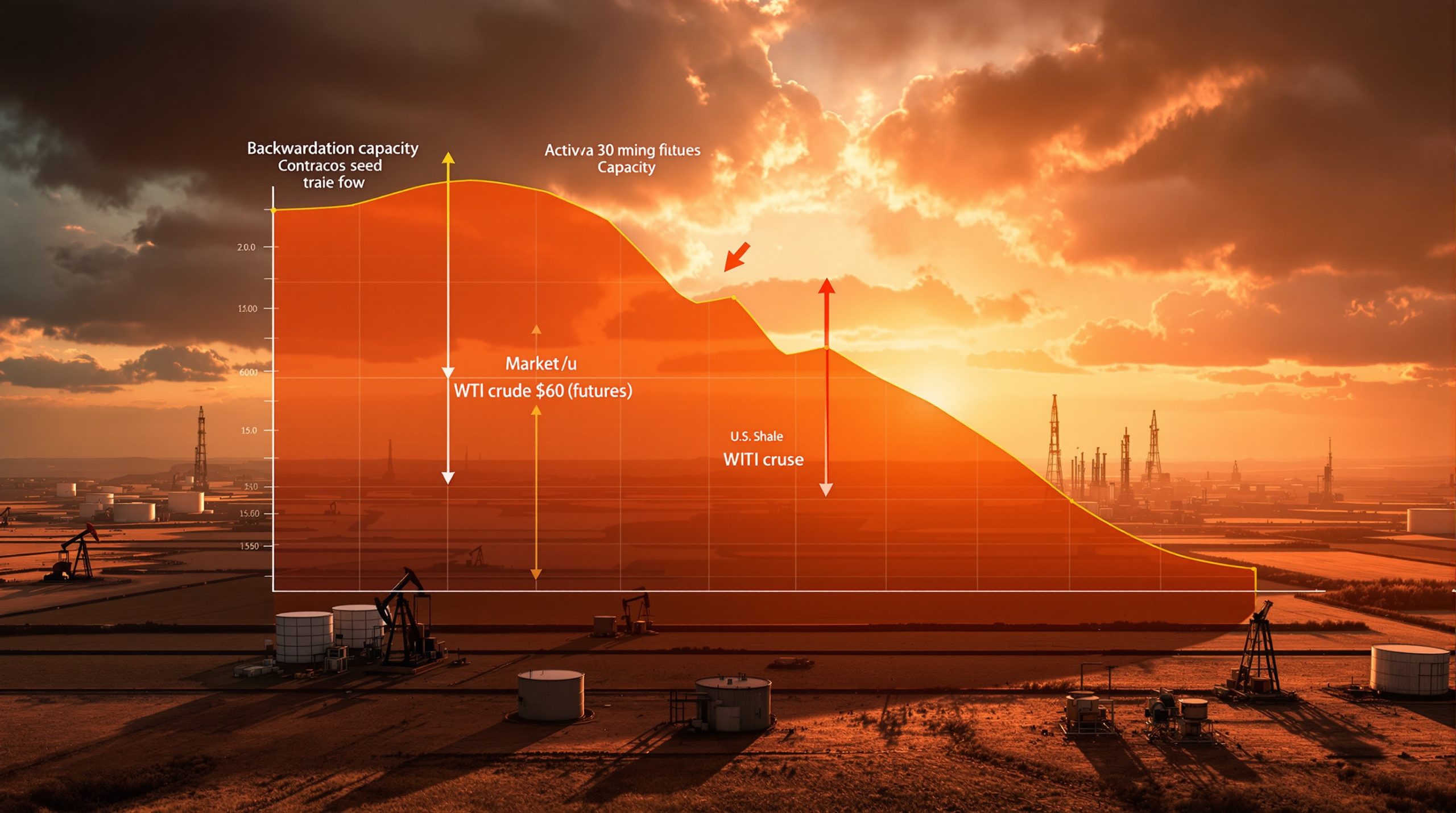The Future of Dense Media Coal Plants in South Africa: Technological Challenges and Industry Trends
Dense media coal plants represent a cornerstone of South Africa's coal processing infrastructure, utilizing specialized separation technology to produce high-quality coal products for both domestic power generation and export markets. These facilities employ dense medium cyclones (DMCs) and related equipment to separate coal from impurities based on density differences, resulting in cleaner coal with higher calorific values.
The technology has been critical to South Africa's position as a major coal producer, helping transform raw coal into products that meet stringent quality specifications for power utilities like Eskom and international buyers. With a history spanning over eight decades, these plants have evolved significantly in terms of efficiency, size, and technological sophistication.
How Has Dense Media Technology Evolved in South African Coal Processing?
Historical Development of Dense Media Separation
Dense media separation technology has undergone continuous refinement in South Africa over the past 85 years. What began as relatively simple separation processes has evolved into sophisticated systems capable of processing thousands of tonnes per hour with remarkable efficiency.
The technology's evolution has been characterized by progressively larger equipment dimensions to handle increased throughput, enhanced separation efficiency through improved cyclone designs, integration of automation and digital control systems, and development of specialized magnetic separation systems for medium recovery.
South Africa has been at the forefront of this technological development, with many innovations in dense media coal plants in South Africa originating from challenges faced in processing the country's diverse coal types.
Technical Advancements in Cyclone Design
Modern dense media cyclones have reached impressive dimensions, with diameters now extending to 1,500 mm—a significant increase from earlier generations. These larger cyclones offer several advantages, including higher throughput capacity per unit, improved separation efficiency for coarser coal fractions, better handling of variable feed characteristics, and enhanced operational stability under fluctuating conditions.
Screens supporting these operations have similarly expanded, now reaching widths of up to 4.2 meters to accommodate the increased material flow from larger cyclones. This scaling-up of equipment has been a direct response to market demands for higher processing capacities and improved product quality.
The introduction of high-strength rare earth magnets represents another significant advancement, eliminating the need for multistage magnetic separation and thus reducing both the complexity and cost of plant designs.
What Efficiency Metrics Set Dense Media Plants Apart?
Understanding Effective Performance Measures (EPMs)
A distinctive feature of dense media separation technology is its use of Effective Performance Measures (EPMs) as quantifiable efficiency metrics. Unlike many other mineral processing technologies, dense media systems can be precisely evaluated using these standardized measurements.
EPMs provide several advantages, including objective assessment of separation efficiency, ability to compare performance across different plants, clear identification of operational issues, and quantifiable basis for process improvements.
The industry standard for measuring separation efficiency makes dense media plants unique in the minerals processing field. Few other technologies offer such precise performance quantification, making it easier to optimize operations and compare different installations.
Comparative Efficiency Against Alternative Technologies
When compared to alternative coal processing technologies such as jigs, dense media systems demonstrate superior separation efficiency. This advantage becomes particularly significant when processing coal with difficult washing characteristics, material requiring precise density cutpoints, and feeds with high proportions of near-density material.
Calculating similar efficiency metrics for alternative technologies like flotation yields significantly poorer results, with values around 1.2 compared to the much more efficient dense media processes. The enhanced separation precision translates directly into improved product quality and higher overall plant yields—critical factors in maximizing the economic value of coal resources.
This efficiency advantage has been a key factor in the technology's longevity despite significant capital costs.
Why Are Large-Scale Dense Media Plants Facing Challenges?
Market Demand Shifts Affecting Plant Construction
The construction of new large-scale dense media coal plants in South Africa faces significant headwinds due to evolving market conditions, including declining investment in new coal mining projects, shifting energy priorities toward renewable sources, increasing pressure to reduce carbon emissions, and economic challenges facing the coal sector generally.
These factors have collectively reduced demand for new processing infrastructure, despite the proven efficiency of the technology. The global energy transition has created uncertainty around long-term coal demand, making it difficult to justify the substantial capital investment required for new large-scale plants.
South Africa's own energy transition plans, though still evolving, signal a gradual move away from coal dependence, further complicating the business case for major new coal processing facilities.
Knowledge Retention Concerns in the Industry
A concerning trend in the industry is the dwindling pool of specialized engineering knowledge required to design and build these complex facilities. As industry expert Mark Cresswell observed at the 21st International Coal Preparation Conference in 2025, "There are very few project engineering companies now with in-depth design knowledge for these big plants, and that's really just because there isn't a market."
This erosion of specialized expertise creates a feedback loop: fewer projects lead to less knowledge retention, which in turn makes future projects more challenging to execute properly. Without active projects to train the next generation of engineers and technicians, crucial design and operational knowledge risks being lost.
The specialized nature of dense media plant design isn't typically covered in depth in standard engineering curricula, making on-the-job training particularly important for knowledge transfer.
What Are the Technical Limitations of Current Dense Media Systems?
Size and Scale Constraints
Current dense media technology appears to be approaching practical limits in terms of equipment size and processing capacity. Cyclone diameters of 1,500 mm represent near-maximum practical dimensions, while screen widths of 4.2 meters approach mechanical design limits. Additionally, pumping systems face increased wear and energy consumption at larger scales, and plant footprints become increasingly challenging to manage beyond certain capacities.
These physical constraints suggest that simply scaling up existing designs may not be viable for future capacity increases. Engineering challenges include managing the substantial forces involved in larger equipment, maintaining structural integrity, and ensuring even flow distribution in oversized components.
The industry consensus appears to be that the technology has reached a plateau in terms of size optimization, with future developments likely to focus on efficiency improvements rather than further size increases.
Maintenance and Operational Challenges
While technically efficient, large-scale dense media plants present significant operational challenges, including high maintenance requirements for wear components, substantial medium consumption and recovery demands, complex control systems requiring specialized knowledge, and significant energy consumption for material handling and separation.
These factors contribute to the high capital and operational costs associated with these facilities, potentially limiting their economic viability as coal markets evolve. The requirement for specialized maintenance expertise adds another layer of complexity, particularly as the pool of experienced technicians shrinks.
Ensuring consistent performance while managing operational costs remains a delicate balance, especially for older plants that may require more frequent component replacement or rehabilitation.
What Alternative Technologies Are Being Considered?
Three-Product Cyclones and Alternative Separators
The industry has explored several alternative separation technologies, including three-product cyclones capable of simultaneous multiple density separations, enhanced gravity separators with reduced medium requirements, hybrid systems combining dense media with other separation technologies, and advanced dry separation systems for certain applications.
However, these alternatives generally involve trade-offs in separation efficiency or are applicable only in specific circumstances, limiting their potential to fully replace traditional dense media systems. While offering potential advantages in specific applications, they haven't demonstrated the versatility and reliability that have made dense media technology the industry standard.
Some niche applications, particularly for lower-value coal or in water-scarce regions, may find these alternative technologies attractive despite efficiency compromises.
Efficiency vs. Complexity Trade-offs
The fundamental challenge with alternative technologies lies in the trade-off between separation efficiency and operational complexity. Simpler systems typically sacrifice separation precision, while systems matching dense media efficiency often introduce other complexities. Lower capital cost options frequently incur higher operational expenses, and reduced medium consumption may come at the expense of product quality.
These trade-offs explain why dense media technology has remained dominant despite its challenges, as the alternatives have yet to demonstrate a clearly superior value proposition across all relevant parameters. The industry continues to evaluate these alternatives, but widespread adoption would likely require significant technological breakthroughs or dramatic shifts in economic factors.
For certain applications, particularly with less demanding separation requirements, these alternatives may provide sufficient performance at lower cost, but they haven't displaced dense media technology for high-precision, high-throughput applications.
How Might Dense Media Technology Evolve in the Future?
Potential Areas for Incremental Improvement
While revolutionary changes may be unlikely, several areas offer potential for incremental improvements in dense media technology, including enhanced automation and process control systems, energy efficiency improvements in pumping and material handling, modularization to reduce construction costs and timelines, and adaptation to different coal types and changing quality specifications.
These evolutionary improvements could help extend the viability of dense media technology even as market conditions change. Advanced sensors and control systems offer particular promise for optimizing performance while reducing energy consumption and medium losses.
The integration of innovation trends in mining such as machine learning algorithms for predictive maintenance and performance optimization represents another frontier that could enhance plant economics without fundamental technology changes.
Environmental Considerations and Regulatory Adaptation
Future developments in dense media plants will likely focus on addressing environmental concerns, including reduced water consumption through improved recycling, lower energy intensity through equipment optimization, improved fine coal recovery to minimize waste, and enhanced medium recovery to reduce consumable costs.
Such improvements would help align the technology with increasingly stringent environmental regulations while potentially improving economic performance. Water management in particular represents a critical area for improvement, as many coal-producing regions face increasing water scarcity challenges.
Reducing the overall environmental footprint of coal processing will become increasingly important as regulatory pressures intensify, even in markets where coal remains an important energy source.
What Does the Future Hold for South African Coal Processing?
Industry Outlook and Market Projections
The outlook for South African coal processing infrastructure appears to be at an inflection point. Existing plants will likely continue operating for their designed lifespans, but major new greenfield developments may become increasingly rare. Brownfield expansions and upgrades may represent the primary investment focus, while specialized applications for metallurgical coal may sustain some new development.
This evolution reflects broader shifts in global energy markets and South Africa's own energy transition plans. While domestic thermal coal demand may gradually decline, export markets and metallurgical coal applications could provide continuing demand for high-quality processed coal.
The industry must navigate this transition period carefully, balancing investment in existing infrastructure maintenance against uncertain long-term demand prospects.
Balancing Technology Preservation with Market Reality
The industry faces a delicate balance between preserving valuable technical expertise and adapting to changing market realities. Documentation and knowledge transfer become increasingly important, training programs need to maintain critical skills despite fewer new projects, engineering firms may need to diversify while maintaining coal processing capabilities, and universities and technical institutions play a vital role in knowledge preservation.
Without deliberate efforts to maintain this specialized knowledge base, valuable expertise accumulated over decades could be permanently lost. Industry associations, educational institutions, and major engineering firms all have roles to play in preserving this technical legacy.
Some of these specialized skills may find applications in other mineral processing contexts, offering potential pathways for knowledge preservation even as coal-specific applications decline.
What Can We Learn from South Africa's Dense Media Coal Plant Experience?
Lessons for Global Coal Processing Technology
South Africa's experience with dense media coal plants offers valuable lessons for global coal processing, including the importance of continuous technological evolution, the challenge of maintaining specialized expertise in changing markets, the need to balance efficiency, cost, and environmental considerations, and the value of standardized performance metrics for process evaluation.
These insights may prove valuable not only for coal processing but also for other mineral processing applications facing similar challenges. The industry's experience demonstrates both the benefits of technological specialization and the risks when market conditions shift rapidly.
Countries developing their coal processing capabilities can benefit from South Africa's decades of experience, potentially adopting optimized designs while avoiding developmental missteps.
Technological Legacy and Knowledge Transfer
The technological legacy of South Africa's dense media coal plants represents a significant achievement in mineral processing engineering, including the development of highly efficient separation systems, scaling of technology to industrial capacities, integration of complex process control systems, and optimization of medium recovery and management.
Preserving this knowledge, even as new plant construction declines, remains an important consideration for the broader mineral processing community. Documenting best practices, design principles, and operational insights could help maintain this expertise even during market downturns.
The principles of efficient density-based separation have applications beyond coal processing, potentially in other mineral sectors or even recycling applications, providing additional motivation for knowledge preservation.
Adapting to a Changing Landscape
The era of large-scale dense media coal plants in South Africa appears to be approaching a transition point. While the technology itself remains highly efficient and effective, market conditions and industry trends suggest that new mega-projects may become increasingly rare.
The challenge for the industry lies in adapting to this reality while preserving the valuable technical expertise developed over decades. Whether through knowledge transfer initiatives, educational programs, or documentation efforts, maintaining this specialized capability will be important even as the industry evolves.
For existing operations, the focus will likely shift toward optimization, efficiency improvements, and extending operational lifespans rather than new construction. This pragmatic approach reflects the mature state of both the technology and the market it serves.
Industry experts increasingly question whether South Africa will ever see another 2,000 tonne-per-hour dense media coal plant constructed. The combination of market uncertainty, environmental pressures, and alternative energy development creates significant barriers to such major investments, despite the proven technological effectiveness.
Environmental Adaptation and Sustainability Challenges
As environmental regulations become more stringent globally, dense media plants face increasing pressure to reduce their ecological footprint. Water usage, energy consumption, and waste management represent key challenges that future plant designs must address.
Water conservation technologies, including closed-loop systems and advanced filtration, can significantly reduce fresh water requirements while improving environmental compliance. Similarly, energy efficiency improvements through variable speed drives, optimized pumping systems, and heat recovery can reduce both operational costs and carbon emissions.
The recovery and management of fine coal particles presents both environmental and economic opportunities. Advanced fine coal recovery systems can reduce waste while capturing additional valuable product, improving both mining sustainability transformation and profitability.
Modularization and Flexibility as Strategic Approaches
One promising avenue for dense media technology adaptation involves modularization—designing smaller, standardized plant components that can be combined as needed to create scalable processing facilities. This approach offers several advantages in an uncertain market:
• Lower initial capital requirements
• Faster deployment and commissioning
• Ability to expand capacity incrementally
• Reduced construction complexity
• Potential for relocation as mining operations evolve
Modular designs might sacrifice some economies of scale but gain significantly in flexibility—an increasingly valuable attribute in volatile markets. Several engineering firms have begun developing standardized modular designs that maintain separation efficiency while reducing project complexity and lead times.
This approach may prove particularly valuable for smaller mining operations or those with uncertain reserve lifespans, allowing processing capacity to be matched more precisely to production requirements while limiting financial exposure.
Digitalization and Advanced Process Control
The integration of digital technologies represents another key development pathway for dense media plants. Advanced sensors, real-time monitoring, and automated control systems can significantly improve both operational efficiency and product quality consistency.
Digital twin technology—creating detailed virtual replicas of physical plants for simulation and optimization—offers particular promise for dense media applications. These models allow operators to:
• Predict performance under varying conditions
• Test operational changes before physical implementation
• Identify optimization opportunities
• Train personnel safely without production risks
• Troubleshoot complex issues more effectively
The relatively precise mathematical models that describe dense media separation make this technology especially suitable for digital optimization approaches. Data-driven mining operations and machine learning algorithms can continuously refine operational parameters based on actual performance data, potentially achieving efficiency improvements beyond what human operators could maintain.
Conclusion: Pragmatic Evolution in a Changing Market
The future of dense media coal plants in South Africa will likely be characterized by pragmatic adaptation rather than revolutionary change. The technology itself remains fundamentally sound and highly efficient, but its application will evolve in response to changing market demands, environmental requirements, and economic realities.
For existing plants, the focus will be on extending operational life through targeted upgrades, efficiency improvements, and enhanced maintenance practices. For new projects, smaller, more flexible designs may replace the mega-plants of previous decades, with greater emphasis on environmental performance and operational adaptability.
The specialized knowledge base that has made South Africa a leader in dense media technology represents a valuable asset that extends beyond coal processing. Whether applied to other mineral commodities or adapted for recycling applications, this expertise deserves preservation despite changing market conditions.
While the era of building massive new dense media coal plants in South Africa may be drawing to a close, the technology itself will continue to evolve and find applications where its unmatched separation efficiency provides compelling economic and technical advantages. The integration of modern mine planning insights will be crucial for optimizing existing facilities and ensuring they remain viable through changing market conditions.
Ready to Stay Ahead of Mining Technology Trends?
Discover emerging opportunities and threats in the mining sector before the market reacts by exploring Discovery Alert's proprietary Discovery IQ model at https://discoveryalert.com.au/discoveries/, where you can analyse how technological shifts like those affecting dense media coal plants create valuable investment opportunities.




